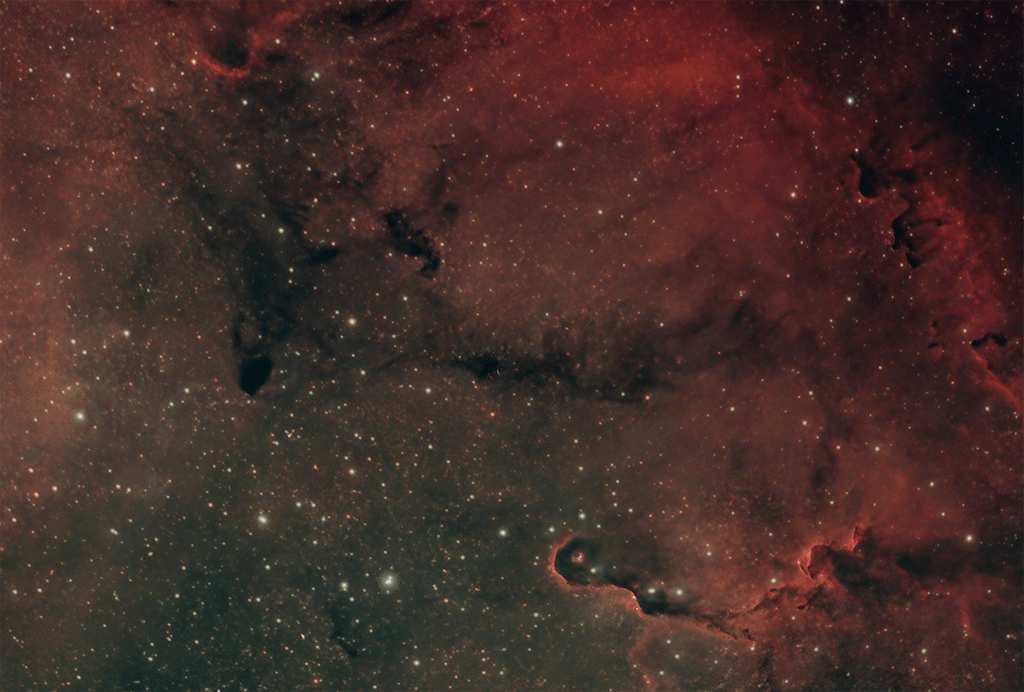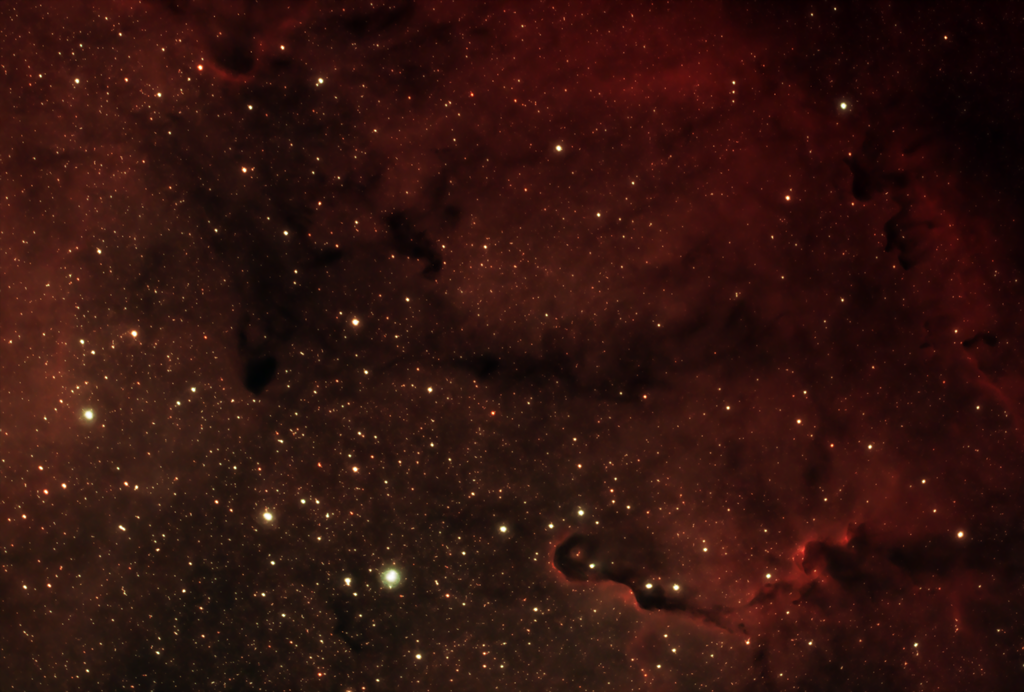It was 25 November 2020 when the night sky was last clear enough for long enough in my area of the East Midlands to set up my astrophotography rig. So in this ‘astro drought’, I’ve reprocessed my data on Elephant Trunk Nebula from May 2020 trying a new technique (for me), which is separating the stars from the background using StarNet and recombining at the end. I would usually use star masks to enhance the background without blowing out the stars, but I think this has worked much better.
StarNet is a convolutional neural network, which is a machine learning technique, that has been trained to remove stars from images leaving only the background. After applying the initial stretches and balances, I ran the layer through StarNet. The before (left) and after (right) images are shown below. It is surprisingly easy and worked very effectively without even having any settings to tweak. I subtracted the background from the original image to isolate the stars into another layer. After further processing of the background, the stars were finally recombined by using the ‘Screen’ blend mode in Photoshop.

My blog post on my last process of the Elephant’s Trunk Nebula is here, but the two versions are also shown below for direct comparison.
Frames
- 55× 265-s light frames (Gain 900)
- Full use of calibration frames (darks, flats and dark flats)
Equipment
- Explore Scientific ED 102 mm Apo f/7 refractor
- Sky-Watcher EQ5 PRO SynScan GOTO equatorial mount
- Altair Hypercam 294C PRO colour fan-cooled camera
- Revelation Adjustable Field Flattener
- Altair quad-band one-shot colour (OSC) 2″ filter
- Altair 60mm guide scope
- Altair GPCAM2 AR0130 mono guide camera
Software
- Sharpcap
- PHD2
- DeepSkyStacker
- Photoshop
- StarNet
- Topaz DeNoise AI




